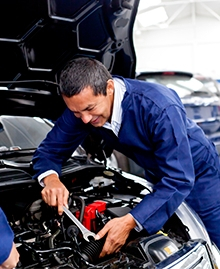Discover the Best Practices for Transporting, Handling, and Storing Flywheels
Most vehicles can’t function without a clutch system, a part which is made of mechanically complex parts like flywheels. Flywheels are complex and rather heavy, so unfortunately damaging them is both easy and costly. That’s why it’s essential to understand how to store them properly to avoid causing any damage. In this 14-minute free webinar, you will learn the best practices for storing flywheels and any components containing flywheels.
Recommended Way to Store Flywheels
Flywheels must be carefully stored, transported, and handled to avoid causing accidental damage to these complex and sensitive components. Valeo recommends only one position to store these easily damaged components safely because every other position could put pressure on the wrong parts, potentially distorting or damaging the clutch beyond repair. Since there are several ways that it can be damaged irreparably, handling and transporting these components must also follow specific guidelines to avoid causing damage.
Possible Damage
Even a careless mistake can cause a lot of damage. Just a small drop could render these parts unusable, causing serious issues such as clutch drag and gear selection difficulty. It could even lock the flywheel, making it impossible to start the vehicle. The cost of replacing a flywheel is high as the entire part will have to be replaced. Dual mass flywheels are more complex than solid flywheels, so the potential for damage is even greater. These heavy parts require extra care when handling to avoid injury.
Cost of Damage
Replacing complex parts like flywheels and clutches is expensive. Since improper handling of parts is not covered by warranty, you’ll have to pay out of pocket. Even worse, some damage isn’t visible but could result in a parts failure. On top of that, installing clutches is a time-consuming process that requires hours of labour on top of the cost of parts. All of this will inconvenience customers eager to get their vehicles back on the road. Knowing the best practices to handle these parts and how to identify when they need to be replaced can spare you from the worst consequences.
What to do if Damaged
It’s essential to know how to spot a damaged flywheel or complete module kit to avoid installing a damaged part. That includes identifying damaged components like straps, what to do if someone delivers a damaged part, and how to know if your part needs to be replaced. It also includes properly training anyone who handles these parts as a part of their job. While the products are generally labelled with handling instructions, it always helps to understand why these instructions are necessary. If you do ultimately need a replacement, Valeo often sells kits alongside clutch parts for passenger cars and LCVs alike.
What You Will Learn
In our webinar, you will learn the following:
- How flywheels can get damaged
- How to properly store and handle these parts
- What to do if your part is damaged
You’ll also learn how to identify if your clutch is too damaged to proceed with fitment and how specific parts are damaged by incorrect storage or handling. Afterwards, you will find downloadable materials like technical handbooks, technical bulletins, and more.




